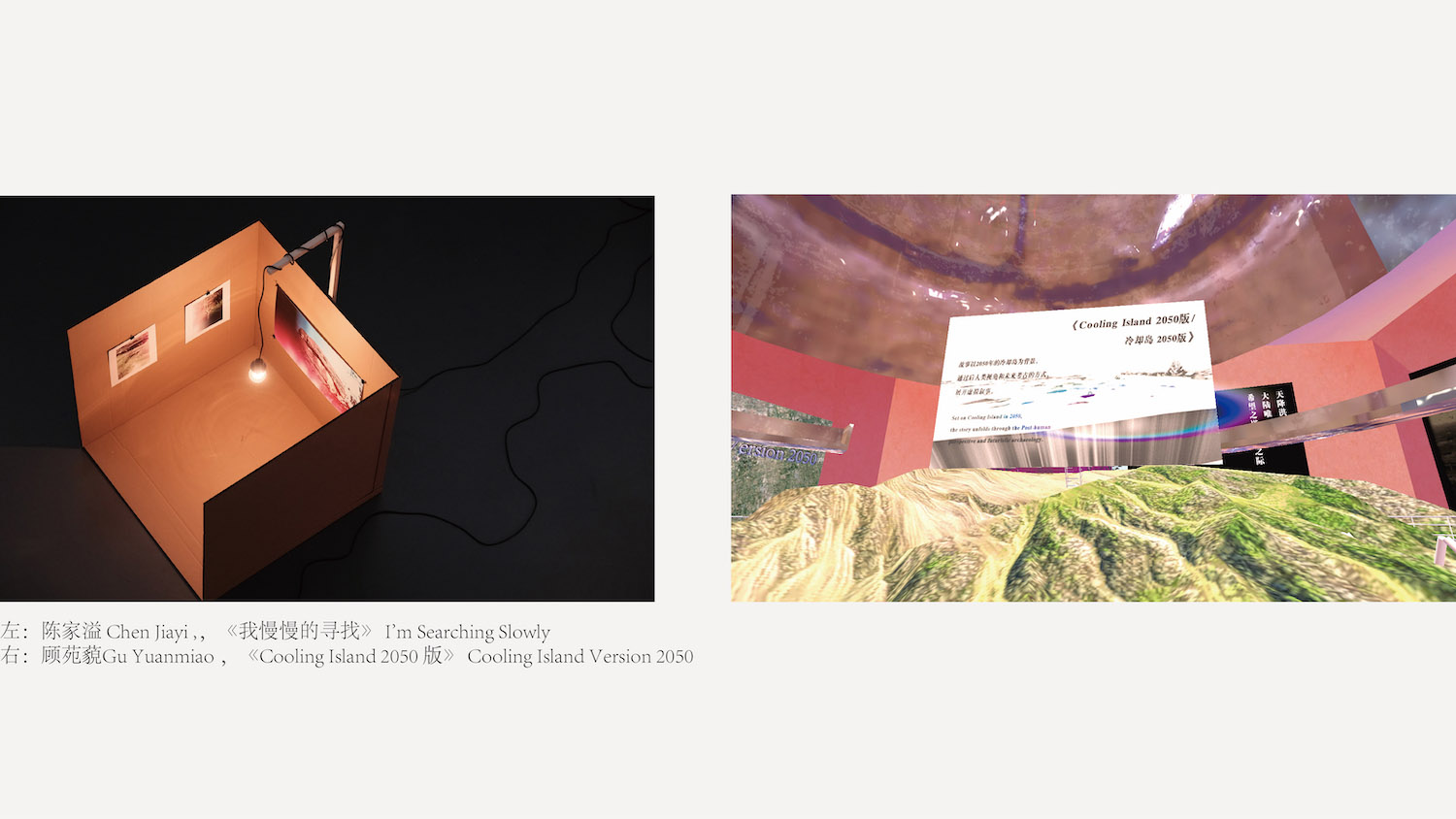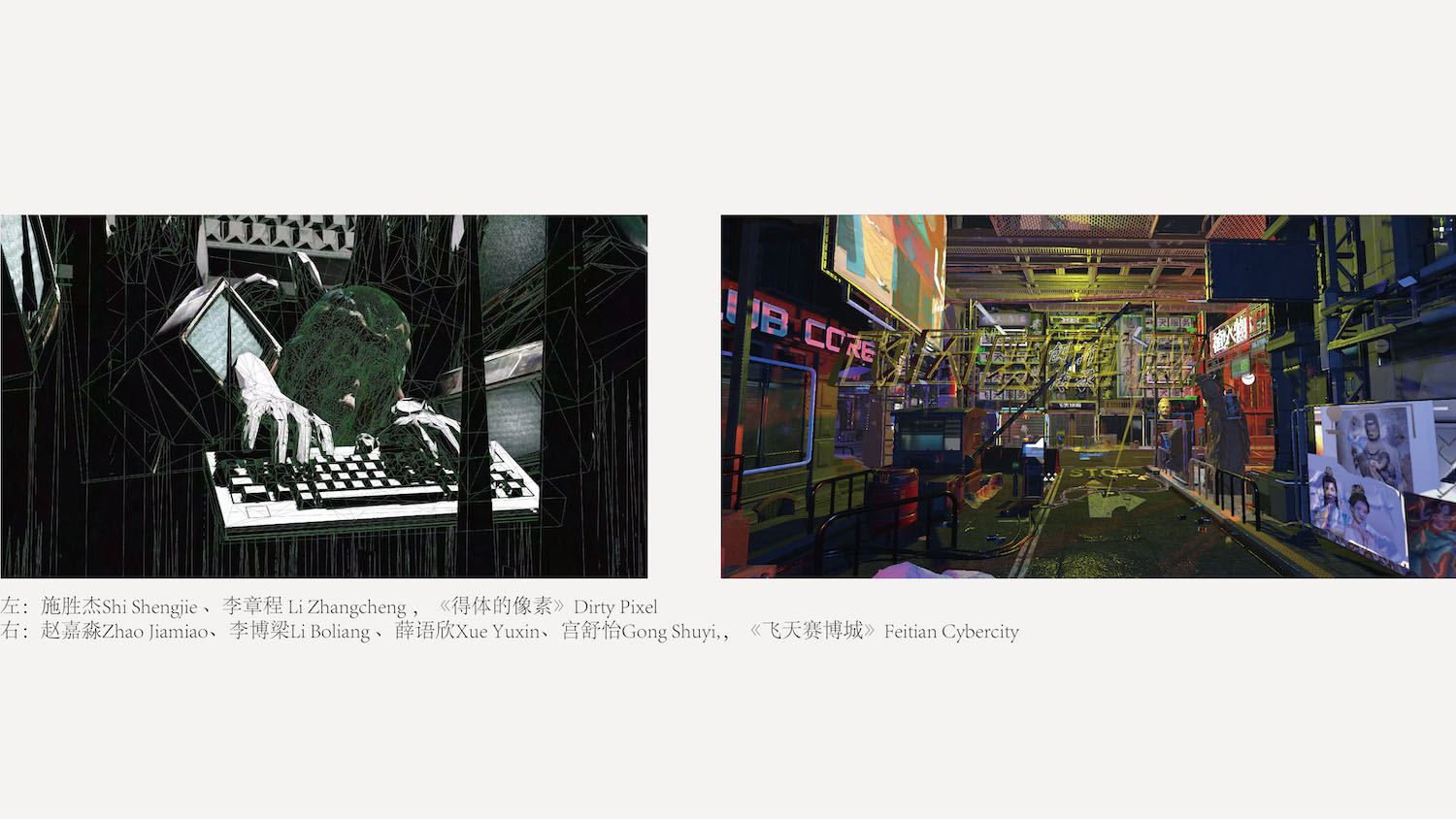艺术教育是自我观照的现场
Art Education as a Site of Self-Reflection
此次展览以“艺术教育是自我观照的现场”为题呈现教学现场和学生作业。多年来上海视觉艺术学院美术学院数字媒体艺术专业的教学方式围绕“自我观照”的理念开展教学,探索作为一种教学方式以小见大展现艺术教学中的自我反射式思考。整场展览以教学纪录、毕设及课程教学成果以及学生自主教学习平台(M station)三个部分组成,既有教师团队对教的反思,又有学生们对学的反诘,形成互为观照的交互性教学模式。艺术教育以培养具有创造性及个性鲜明的艺术创作人才为目标的。 教与学的双方需要为达成这种目标而努力。艺术教学围绕艺术创作中的观念思考和操作层面所需的技能展开,在创作的不同阶段发展与其相适应的方法论,并以合理的教学过程来完成。教学方法有多种版本和模式,但殊途同归,其终点是“回归自身”。在艺术教学的过程中,“回归自身”将教与学的内容与自身联系在一起。在此过程中,教师和学生需要“看到自己”,将“自我观照”作为一个坐标,无论作为教师还是学生,都可以在不同的方法、道路或者疆域中找到各自前进的方向。
The exhibition, titled "Art Education as a Site of Self-Reflection," presents teaching scenes and student assignments. Over the years, the teaching approach of the Digital Media Arts program at the School of Fine Arts, Shanghai Institute of Visual Arts, has been centered around the concept of "self-reflection," exploring this teaching method as a way to reflect on artistic teaching through the microcosm of individual experiences. The entire exhibition consists of three parts: teaching records, graduation projects and course teaching outcomes, and the student-autonomous learning platform (M station). It showcases both the reflections of the teaching team on their teaching practices and the questioning of students on their learning experiences, forming an interactive teaching mode of mutual observation. The goal of art education is to cultivate creative and distinctive artistic talents. Both teachers and students need to strive to achieve this goal. Art teaching revolves around conceptual thinking and skills required for operational aspects in artistic creation, developing methodologies suitable for different stages of creation and completing them through a reasonable teaching process. There are multiple versions and modes of teaching methods, but they all lead to the same end: "returning to oneself." In the process of art teaching, "returning to oneself" connects the content of teaching and learning with oneself. During this process, both teachers and students need to "see themselves," using "self-reflection" as a coordinate. Whether as teachers or students, they can find their own direction in different methods, paths, or territories.
上海视觉艺术学院
Shanghai Institute of Visual Arts
此次展览以“艺术教育是自我观照的现场”为题呈现教学现场和学生作业。多年来上海视觉艺术学院美术学院数字媒体艺术专业的教学方式围绕“自我观照”的理念开展教学,探索作为一种教学方式以小见大展现艺术教学中的自我反射式思考。整场展览以教学纪录、毕设及课程教学成果以及学生自主教学习平台(M station)三个部分组成,既有教师团队对教的反思,又有学生们对学的反诘,形成互为观照的交互性教学模式。艺术教育以培养具有创造性及个性鲜明的艺术创作人才为目标的。 教与学的双方需要为达成这种目标而努力。艺术教学围绕艺术创作中的观念思考和操作层面所需的技能展开,在创作的不同阶段发展与其相适应的方法论,并以合理的教学过程来完成。教学方法有多种版本和模式,但殊途同归,其终点是“回归自身”。在艺术教学的过程中,“回归自身”将教与学的内容与自身联系在一起。在此过程中,教师和学生需要“看到自己”,将“自我观照”作为一个坐标,无论作为教师还是学生,都可以在不同的方法、道路或者疆域中找到各自前进的方向。
Founded in 2005, Shanghai Institute of Visual Arts (SIVA) is a new comprehensive arts-focused ordinary undergraduate institution primarily funded by state investment while also incorporating other social forces. It was originally known as Shanghai Institute of Visual Arts, Fudan University. In 2013, with the approval of the Ministry of Education, it became an independently established "Shanghai Institute of Visual Arts." Located in the Songjiang University Town campus, SIVA has established a school-running orientation to "strive to build an applied arts college with creativity as its soul, integrating art and technology education as its characteristic, and facing the development of the cultural industry and social needs." Adhering to the school-running principles of "unique, innovative, excellent, and refined," as well as the governance principles of "educators managing the school, professors overseeing academics, school autonomy, and student self-management," SIVA has established a unified educational philosophy that emphasizes "originality, artistry, practicality, and forward-thinking." It has pioneered a teaching approach that combines teaching and studios, as well as on-campus teaching and off-campus internships. The school offers 16 art majors across 37 professional directions, including "Visual Communication Design," "Product Design," "Environmental Design," "Art and Technology," "Digital Media Arts," "Animation," "Photography," "Broadcasting and Hosting," "Radio and Television Directing," "Fashion and Costume Design," "Crafts and Fine Arts," "Painting," "Sculpture," "Public Art," "Performing Arts," and "Cultural Industry Management." There are currently 294 full-time teachers, 158 part-time teachers, and over 250 guest and adjunct professors. The total number of students is over 4,038. With a grateful mindset and a spirit of preserving history, informing policy, and nurturing talent, SIVA inherits history and embraces challenges. We are grateful for the support and care from all walks of life. We will thrive and develop rapidly under the sunshine you project upon us.

